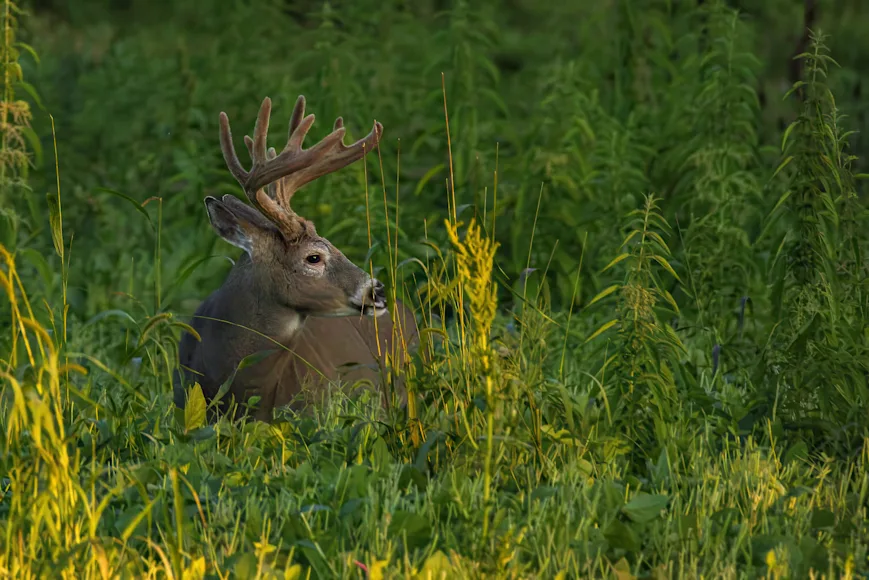August is a critical month for the whitetail hunter. Whether your archery season begins in September or October, now is the time to finish your pre-season chores and be ready to strike when the time is right. From fall food plots to travel corridors to mock scrapes, what you do now will have an impact on your whitetail season ahead.
Aside from property improvements, August is the best time to locate protein-rich food sources that bucks are feeding on and observe them from a distance. By mid-August, bucks will have topped out but will hold their velvet. Testosterone levels are low, and bucks are lazy. Late-summer bucks drift from bed to food and food to bed. But most bucks, even the giants, will show on winter wheat, alfalfa, beans, and other green food sources in the evening.
Trail camera data only reveals so much. There's nothing like observing deer on the hoof through a quality spotting scope. Not only does seeing live deer make the heart race, but you can learn a lot about deer behavior when you watch them. Plus, you can observe how they enter a food source and move across it. All the intel you gather now will help you develop early-season, rut, and post-rut plans. Here are seven pre-season whitetail chores to do now.
1. Hang & Check Stands
If you hunt from treestands, now is the time to get into the woods to hang and check your sets. If you have existing stands from last year, visit those first. Put on your HSS Hanger Harness or whatever safety device you use and make sure the stands' straps, buckles, nuts, washers, etc., are all in good shape. I carry several extra ratchet straps in my Hanger Harness so I can replace ruined or weakened straps.
I also bring an adjustable tree saw and trim out all of my old shooting lanes. It helps to have another hunter with you; someone on the ground that can remove limbs, brush, etc., while you trim from above. The person on the ground can also give you pointers about what not to trim. Concealment is key! If you cut too much, you'll expose your position, especially when the leaves fall.
If you're paranoid about a lack of back cover, then add some. I have several stand sites that I add cedar limbs to each year. I use my chainsaw to cut down cedar limbs and then use rope, straps, and zip ties to secure them. Go the extra mile now, and it will pay off later. If you're hanging a new stand, follow the advice above. If you're planning to saddle hunt an area and you know the tree you want to get in, prepare the tree and cut shooting lanes.
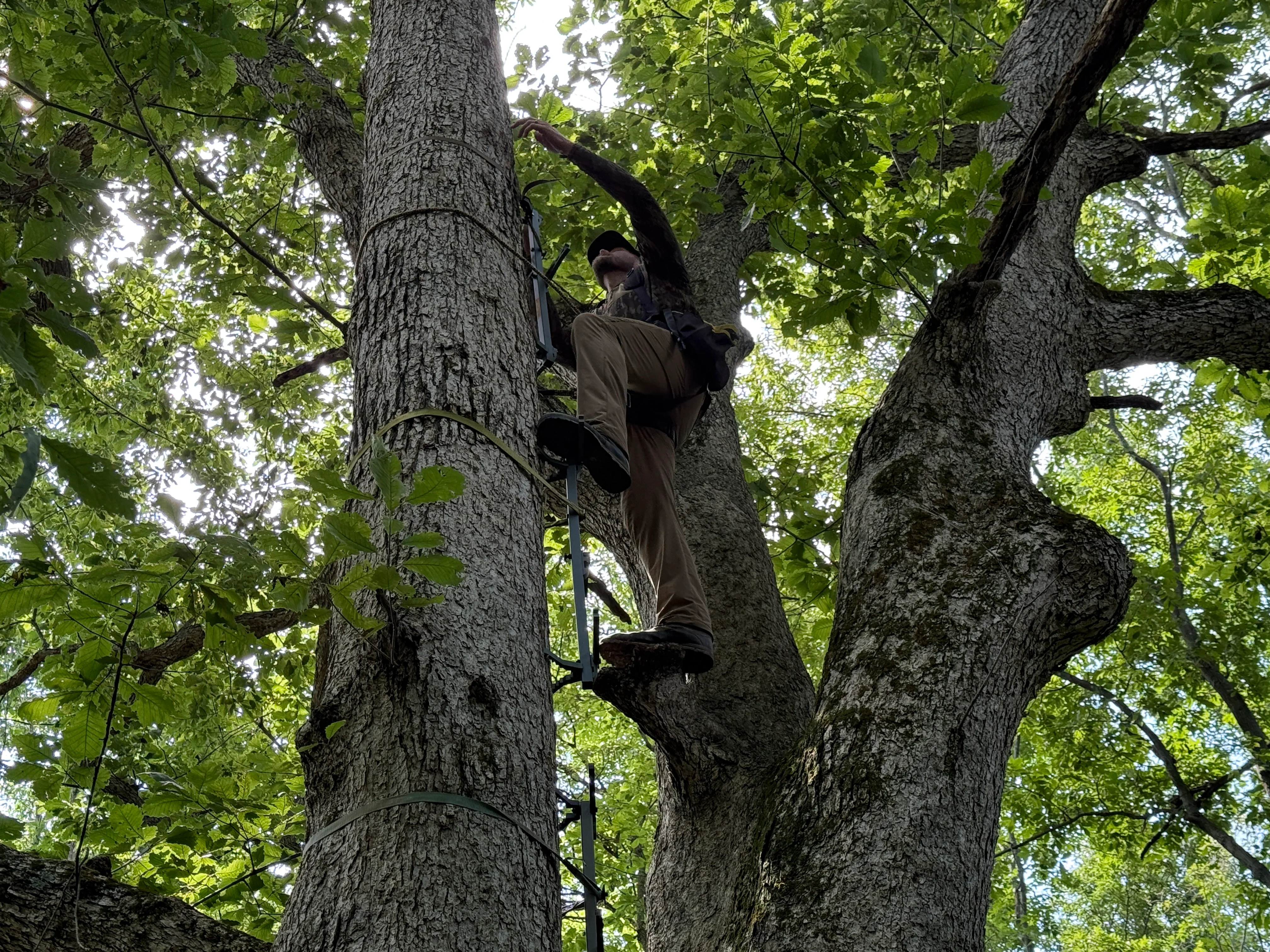
2. Add Rubbing Posts
All but a few of my stand sites have cedar rubbing posts 20 to 25 yards from the stand. And all of them get crushed from the time the bucks start stripping their velvet until I turn my cameras off in late January. Cut some live cedar or pine limbs/trees. I like an 8-foot trunk that's 5 to 6 inches in diameter. Dig a three-foot hole twice as wide as the trunk, insert the post, and backfill the dirt slowly. I use a bucket of water and a tamper to ensure all my posts are solid in the ground. Big bucks will push hard into these posts while they rub, and you don't want a buck knocking a post over.
Once the post is set, I use my handsaw and scar the post. This releases more smell and triggers bucks to rub the post. Earlier in August, I visited all my pre-existing posts and nicked them up with a saw to freshen them up. Having a rubbing post in the ground gives an approaching buck something to focus on, and eight times out of 10, a buck won't be able to avoid walking over to a lone, strong-smelling tree. Every instinct in his body will tell him to go rub it.
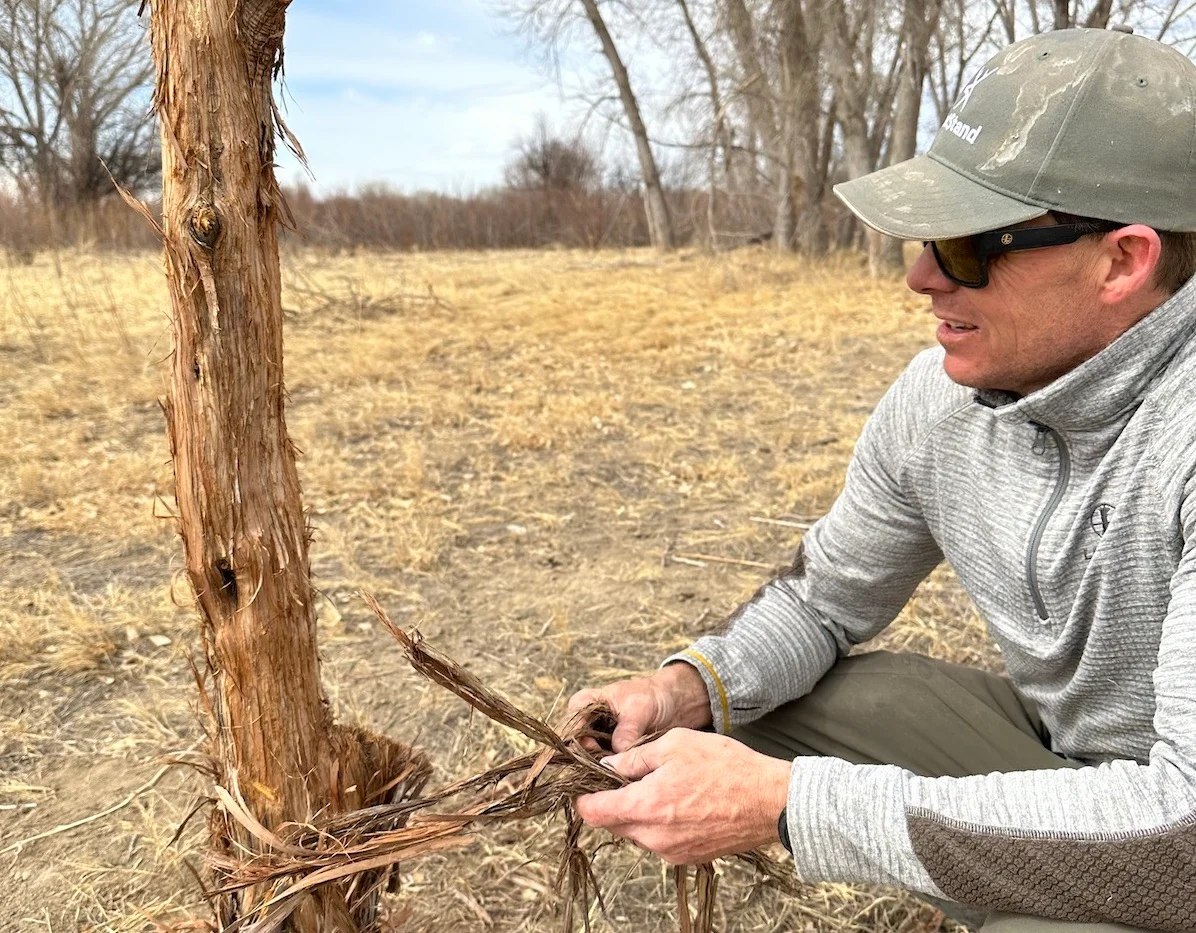
3. Make Mock Scrapes
I already have deer hitting my mock scrapes. This has nothing to do with the rut and everything to do with smell. Deer love the smell of churned earth. Add a little Wildlife Research Trails End #307 or your favorite pre-rut deer scent, and you'll be surprised at the late-summer and early-fall activity some of your mock scrapes get.
Scrapes that get taken over during the summer and early fall often become large community scrapes during mid-October. Make the scrape more attractive by adding a rope or vine to put the licking branch right in a buck's face. I don't get fancy when creating mock scrapes. I use the heels of my rubber boots to clear out an area and a stick to churn the earth. I put most of my attention into providing an ideally positioned licking branch, and then I walk away.

4. Boost Travel Corridors
One of the best things I've done on my whitetail properties is improving deer travel and blocking it. Rent or borrow a small tractor with a brush hog or a skid-steer with a mower and cut travel lanes that connect bedding and food sources to stand sites. If renting or borrowing machinery isn't in the cards, walk established deer trails with a chainsaw and remove fallen trees, limbs, and other debris. I even go into weed-eater mode when necessary. Deer love the path of least resistance, and if you provide them with it, they will use it.
Along with improving travel, I also block deer travel to prevent deer from going where I don't want them to. Hinge cutting a few trees to block a trail is never a bad idea, and you're providing new forage and bedding. You can also cut down old, dead trees, limbs, etc., and pile them up to keep deer from going a certain way.
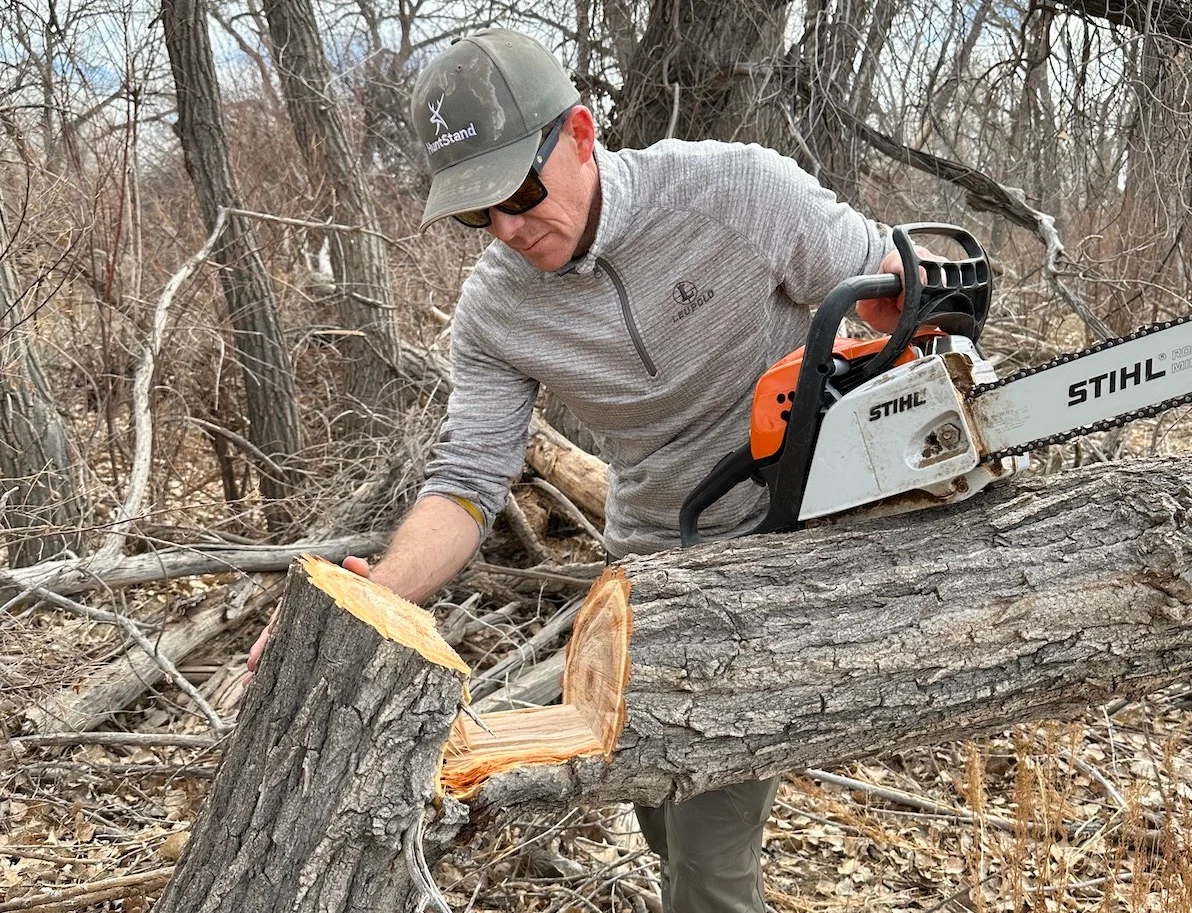
5. Move Trail Cameras
You can't have enough trail cameras. I love them. Even though I have to remove my cellular scouting cameras before the season (by law), I run them all summer. The information they provide is invaluable. In late August, I will replace my cell cams with standard digital cameras and set them in locations where I don't expect to get a lot of activity until the rut. These locales include old rub lines, river crossings, last year's community scrapes, ridge lines, and rut funnels.
I use lithium batteries, 64GB SD cards, and set my rut cameras to video mode. You will learn more from a video than you ever will from a picture. You will often see how a buck came into an area and how he left it. If you get enough rut cameras out, you will begin to see how bucks use a property—showing up on one camera and then another less than 20 minutes later. Just know that these cameras, for the time being, may only snap a video or two a week. Make your rut predictions and get cameras in those locations now.
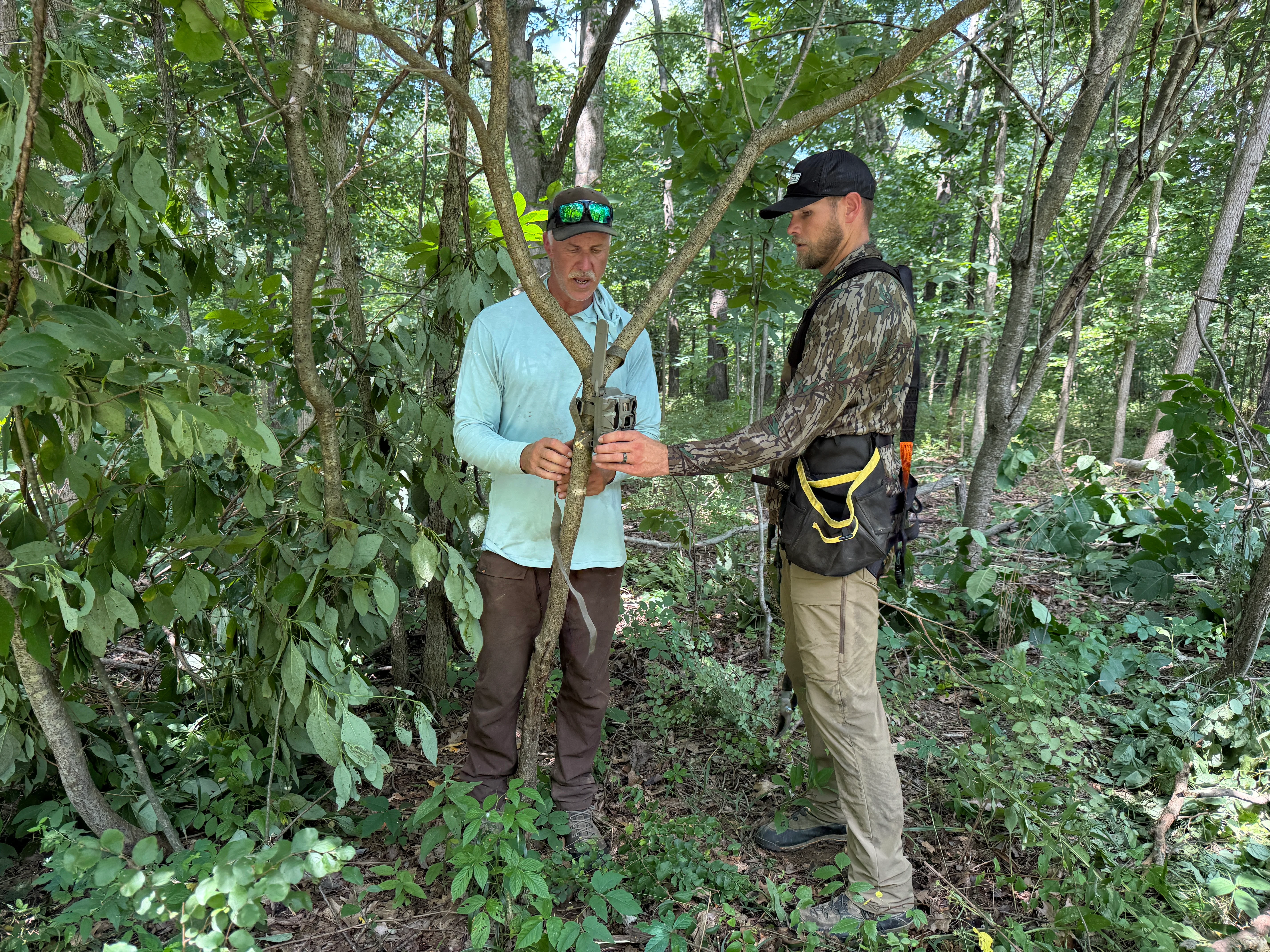
6. Add a Water Source
My whitetail property has two water sources running through it: the Arkansas River and a drainage ditch. In August of 2023, I dug an 80-gallon pond, placed a liner in it, and set a camera. Two days later, the deer started hammering the water source. I purchased a 63-gallon water bladder from Amazon that would fit in the back of my truck to keep the pond full.
On October 23, 2023, I shot a heavy 8-point while he drank from my pond. It was so rewarding. In 2024, I increased the size of the pond, bought a bigger water bladder, and on October 24, 2024, shot a Booner whitetail at 26 yards while he was walking to my water source. I've learned that white-tailed deer prefer to drink from a still water source. If that water source is close to bedding, where deer can get up and drink and get right back into the cover, all the better. Add water to your whitetail property before the fall.
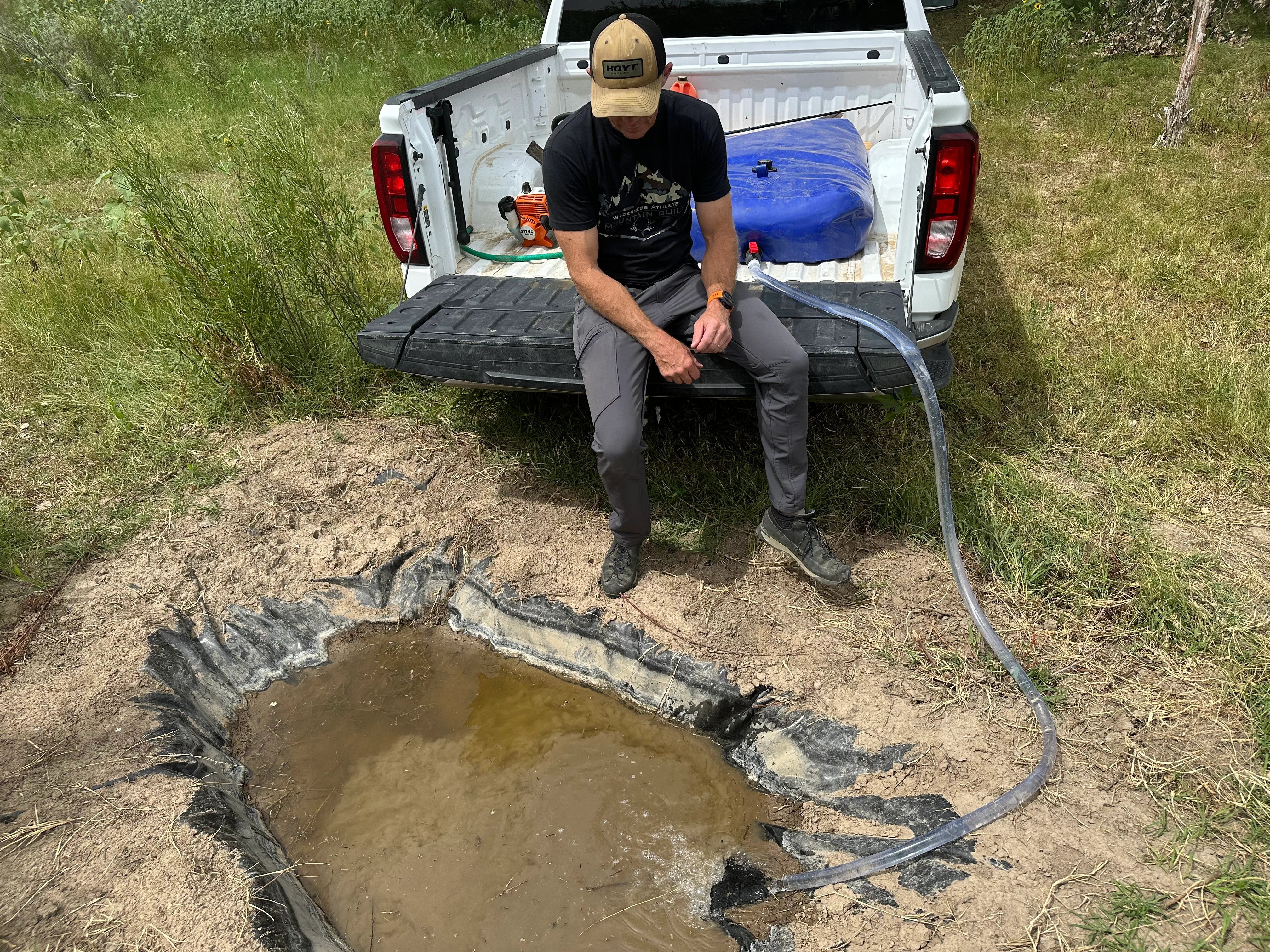
7. Scout from Afar
I spend most of my August evenings sitting in an Alps chair in the back of my GMC, watching green fields through the lens of my spotting scope. Every year, I glass deer, usually a shooter or two, that I haven't gotten a picture of. Not only will you see a lot of bucks if you're on the right food source, but you'll also get an idea of how deer enter and exit that food source. This is information to lock in the back of your mind for later.

